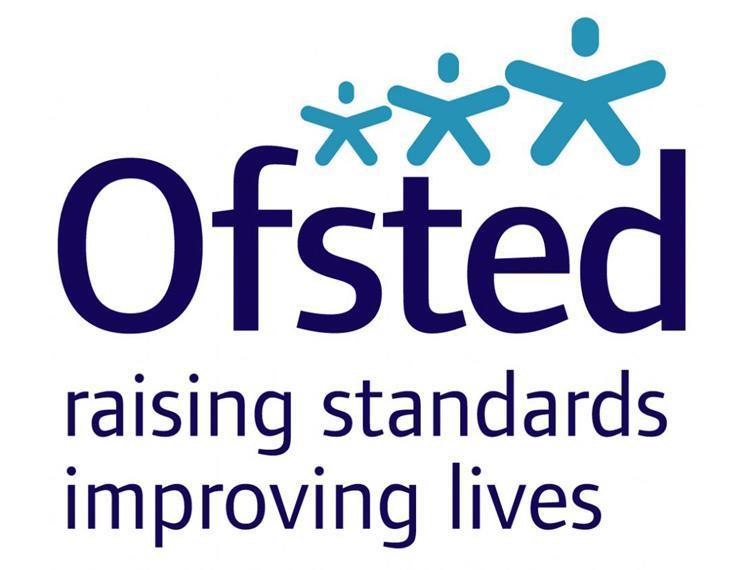Selecting new schools for inspection

This guide gives a summary of how we select new schools to inspect, including free schools and academies.
Introduction
This guidance explains how Ofsted selects new schools for inspection. It covers first inspections of different types of academy schools, including free schools. These are likely to account for the majority of new schools. It also applies to academy converters, which are existing schools that have been approved to voluntarily convert to academies and, therefore, are legally new schools.
Help using this guide.
The first inspection of new schools, including academies, will usually take place within 3 years of their opening. We will not normally select a new school for its first inspection until it is in its third year of operation. These arrangements apply to all new schools that are yet to have their first section 5 inspection, including new maintained schools.
We inspect 16 to 19 academies and 16 to 19 free schools using the further education and skills inspection handbook.
Academy converters
Certain types of schools that are judged outstanding are exempt from routine inspection under section 5 of the Education Act 2005, unless there are concerns about their performance.
All exempt schools remain subject to our risk assessment process. If these schools convert to academy status, the new academy will also be exempt from routine inspection under section 5. However, outstanding special schools and pupil referral units that convert to academy status are not exempt from routine inspection under section 5. Regulations state that new academy converters, whose predecessor schools were most recently judged good (or, for special schools and pupil referral units, judged good or outstanding) are eligible to receive an inspection under section 8 of the Education Act 2005.
We refer to these inspections as ‘section 8 inspections of good and non-exempt outstanding schools’. As set out in The Education (School Inspection) (England) (Amendment) (No. 2) Regulations 2015, these schools remain subject to section 5 inspection if a section 8 inspection identifies that inspectors need to gather more evidence.
We will normally carry out these section 8 inspections of academy converters whose predecessor schools were judged good or outstanding approximately every 4 years. This is in line with other good schools, as well as outstanding special schools and pupil referral units. However, in the case of the first section 8 inspection of a new academy with a good or outstanding predecessor school, we will consider the inspection history of the predecessor school to decide the timing of the inspection. For example, if the last inspection of the predecessor school took place some years before academy conversion, we may deem that the school would benefit from an earlier section 8 inspection. Further details on the policy for section 8 inspections are included in the school inspection handbook – section 8.
Academy converters where we recommended a section 5 inspection for the predecessor school
There are some new converter academies whose predecessor school was judged good with evidence that it may have improved to outstanding at its most recent section 8 inspection. We informed the predecessor school that its next inspection would be a section 5 inspection, but it did not receive the inspection before conversion. Therefore, the new converter academy will receive a section 5 inspection as its first inspection.
Similarly, some new converter academies have a predecessor school that received a section 8 inspection and the lead inspector was not satisfied that the school would receive at least its current grade if a section 5 inspection was carried out at that time. We informed the predecessor school that its next inspection would be a section 5 inspection, but it did not receive the inspection before conversion. The new converter academy will receive a section 5 inspection as its first inspection.
In both these circumstances, the section 5 inspection will normally take place:
- no later than the predecessor school would have received the section 5 inspection if it had not converted to an academy; but
- no earlier than one year after the new academy opens
Sponsor-led academies
We treat maintained schools that become sponsor-led academies, and whose predecessor schools were most recently judged good or outstanding, as new schools for inspection purposes. They are subject to a section 5 inspection as their first inspection. This will normally take place within 3 years of the school becoming a sponsor-led academy.
Schools that undergo significant change
Good schools, outstanding pupil referral units and outstanding special schools
If a school judged good at its previous inspection subsequently undergoes significant change, for example through merging with another school or by adding a new phase or key stage, its next inspection will normally be a section 5 inspection instead of a section 8 inspection. This assumes a situation where the good school remains open and incorporates another school that closes. In these cases, the good school retains its Department for Education establishment number and unique reference number (URN), and so is not legally a new school.
The section 5 inspection will normally take place within 3 years of the change, or sooner if the prescribed statutory timeframe for inspection falls before then. The statutory timeframe is within 5 school years from the end of the school year in which the previous section 5 inspection (or the previous section 8 inspection of a good or non-exempt outstanding school) took place. If we judge the expanded school to be good at this inspection, it will be eligible for a section 8 inspection (rather than another section 5) approximately 4 years later. This process also applies to pupil referral units and special schools that were judged good or outstanding at their previous inspection, and subsequently undergo significant change.
New schools with certain pupils not yet on roll when they open
Some new schools that are registered to teach pupils in a particular phase or key stage do not actually have pupils of that age range on roll when they open.
When these schools begin to place pupils on roll for that phase or key stage, we do not regard this as a significant change because the school is already registered for that phase or key stage. It is only when schools change their registration to add a new phase or key stage that we will regard it as a significant change.
Exempt schools
If an exempt school undergoes significant change, it will receive a section 8 ‘no formal designation’ inspection within 3 years of the change. Under section 9 of the Education Act 2005, we may elect to treat this inspection as if it were an inspection under section 5.
’No formal designation’ inspections when we have concerns
We may carry out a section 8 ‘no formal designation’ inspection of any new school at any time, including within 3 years of opening, if information that we hold or receive causes sufficient concern. Under section 9 of the Education Act 2005, inspectors may deem these inspections as a section 5 inspection if they identify concerns to warrant this during the section 8 no formal designation inspection.
Non-association independent schools
This policy document does not apply to fee-paying independent schools, which are covered by separate inspection arrangements. You can find further details in ‘How Ofsted inspects non-association independent schools’.
Using this guide
How to Search the guidance
Click on Ctrl + F or Command + F on a Mac
This will open a search box in the top right hand corner of the page. Type the word you are looking for in the search bar and press enter.
The word will then be highlighted in yellow where every it appears in the guidance. Click on the enter key to move to the next word found.
How to print a copy of the guidance
Click on Ctrl + P or Command + P on a Mac
You have an option to print the full guide or select a page range.
Published 2 September 2019 Contents











Responses